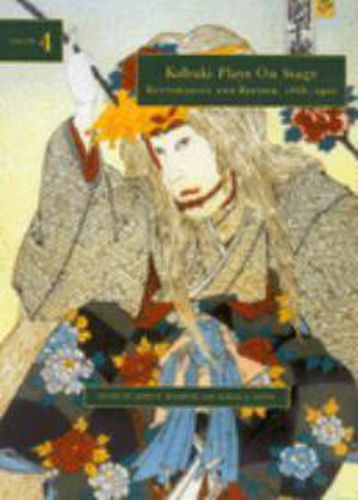Readings Newsletter
Become a Readings Member to make your shopping experience even easier.
Sign in or sign up for free!
You’re not far away from qualifying for FREE standard shipping within Australia
You’ve qualified for FREE standard shipping within Australia
The cart is loading…






Restoration and Reform, 1872-1905, is the fourth and final volume in a monumental new series that traces kabuki’s changing relations to Japanese society during the premodern era. The twelve plays translated in Volume 4 cover the remarkable Meiji period, which followed the restoration of the emperor as the leader of Japan. They reflect the years in which reform-minded leaders struggled to help Japan catch up with the West. Dramatists no less than others sought ways in which to bring their traditional art into the modern world and to bring international respectability to the national stage. Included are kabuki dance plays that strive to resemble no and kyogen; historical dramas that abandon theatrical fantasy and opt for accurate reproduction of ancient manners; domestic dramas featuring colorful heroes and heroines; pieces that introduce faddish Western properties and behavior; and a play that bridges the gap between the conventions of classical kabuki, Shakespeare, and modern psychological drama. Dominating the era are the works of Kawatake Mokuami, the last great kabuki playwright, while the dramaturgy of literary scholar Tsubouchi Shoyo brings kabuki into the twentieth century.
$9.00 standard shipping within Australia
FREE standard shipping within Australia for orders over $100.00
Express & International shipping calculated at checkout
Restoration and Reform, 1872-1905, is the fourth and final volume in a monumental new series that traces kabuki’s changing relations to Japanese society during the premodern era. The twelve plays translated in Volume 4 cover the remarkable Meiji period, which followed the restoration of the emperor as the leader of Japan. They reflect the years in which reform-minded leaders struggled to help Japan catch up with the West. Dramatists no less than others sought ways in which to bring their traditional art into the modern world and to bring international respectability to the national stage. Included are kabuki dance plays that strive to resemble no and kyogen; historical dramas that abandon theatrical fantasy and opt for accurate reproduction of ancient manners; domestic dramas featuring colorful heroes and heroines; pieces that introduce faddish Western properties and behavior; and a play that bridges the gap between the conventions of classical kabuki, Shakespeare, and modern psychological drama. Dominating the era are the works of Kawatake Mokuami, the last great kabuki playwright, while the dramaturgy of literary scholar Tsubouchi Shoyo brings kabuki into the twentieth century.